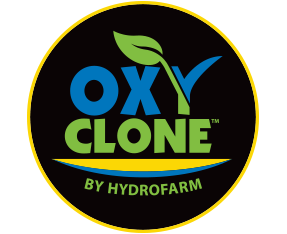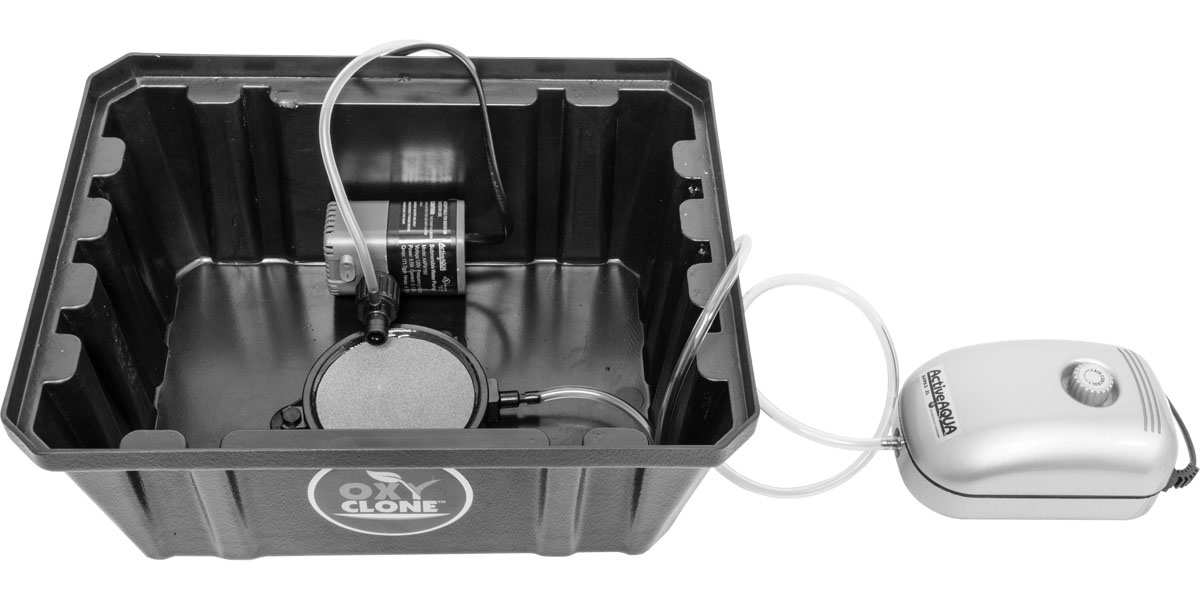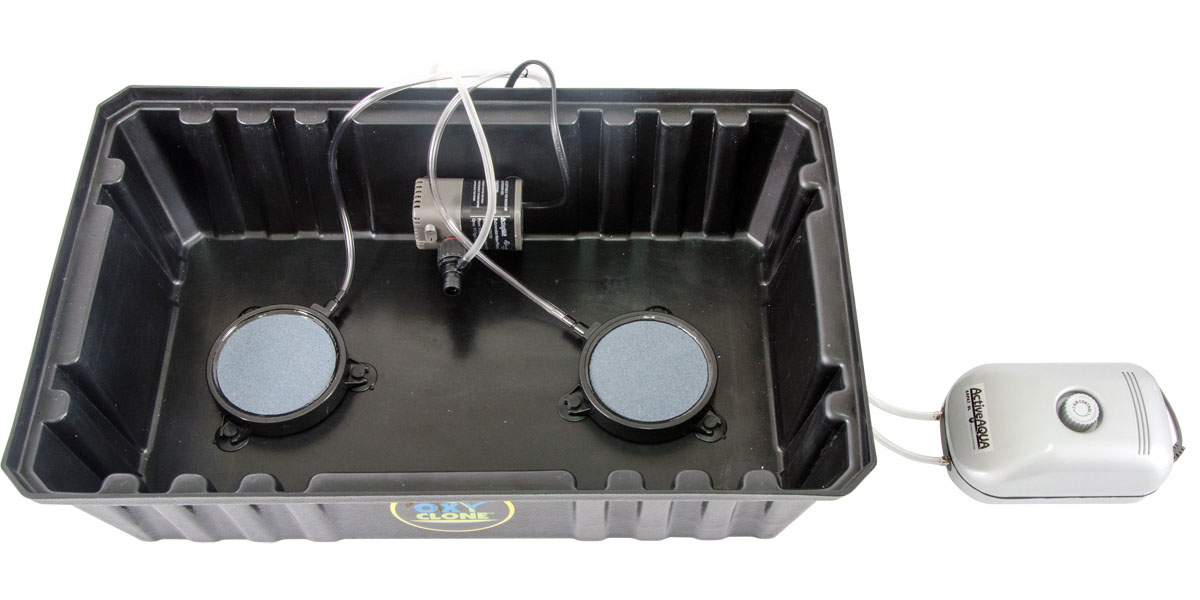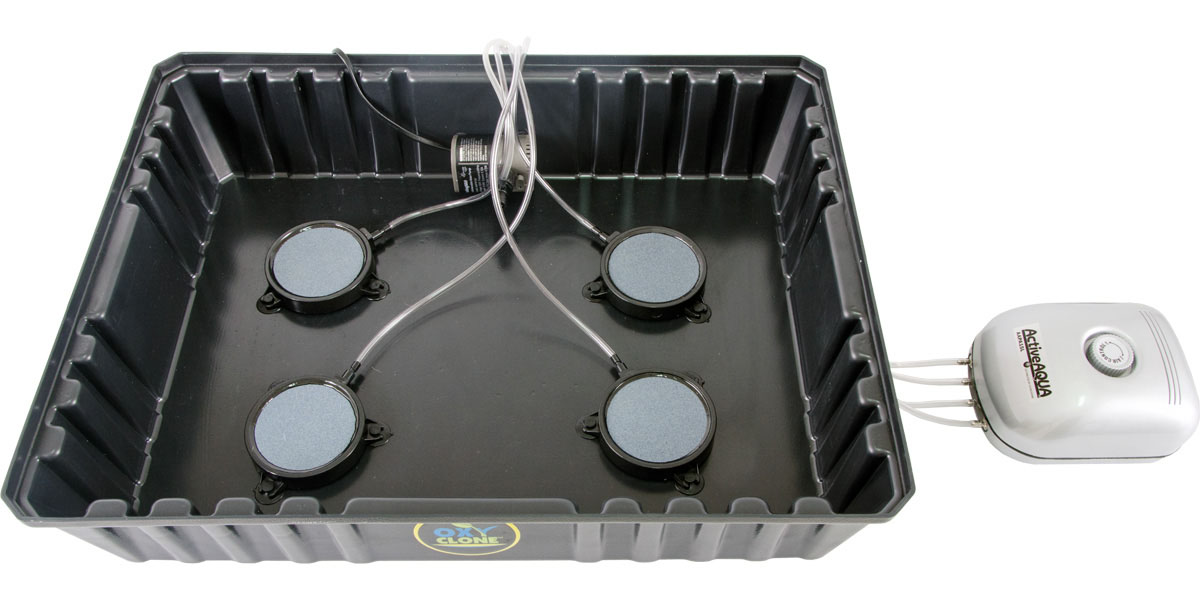Setup
Setting up the oxyCLONE
Fill the oxyCLONE with water to the fill line. We have found the best results from bottled spring water. Municipal tap water is also acceptable, and the chlorine has proven beneficial. We do not recommend using reverse osmosis or distilled water with the oxyCLONE.
- oxyCLONE 20 - use 1.75 gallons of water
- oxyCLONE 40 - use 3.7 gallons of water
- oxyCLONE 80 - use 7 gallons of water
Place the Active Aqua submersible pump, with Venturi air intake tubing attached, so that it sits below the fill line with the suction cups against the wall. The air tube, Venturi tube, and power cord will come out of the oxyCLONE through the small cutout in the back of the cover. Click on the thumbnails below to view the proper positioning of all components.
Remove all packaging from your Active Aqua air pump. Connect one end of the ¼" clear tubing to the air pump outlet, then connect the opposite ends of the clear tubing to the inlet of the air stone. NOTE: Make sure to mount the air pump unit on a stable dry surface above the water level near a 120V power source.
Position the air stone at the center of the bottom of the reservoir, directly in front of your Active Aqua submersible pump. Please note that the included air stone by Active Aqua will begin producing bubbles as soon as you set up your oxyCLONE. However, the air stone will produce even more bubbles after it has become fully saturated. The saturation process may take a day or two, but this will not delay the rooting process.
Plug in the air pump and the submersible pump. Observe the aeration of the water and make sure you are getting plenty of bubbles and movement. If you are not, you may reposition the water pump and adjust the Venturi air valve until you feel that you are receiving the maximum turbulence (the turbulence provides vital oxygenation). You can adjust the air and water pumps for minimum or maximum oxygenation. Run your oxyCLONE continuously 24 hours per day.
Attach cover (lid). The cover fits very snugly inside the rim. The tight fit helps to prevent leaks and maintain high levels of humidity and oxygen inside the cloning chamber.



